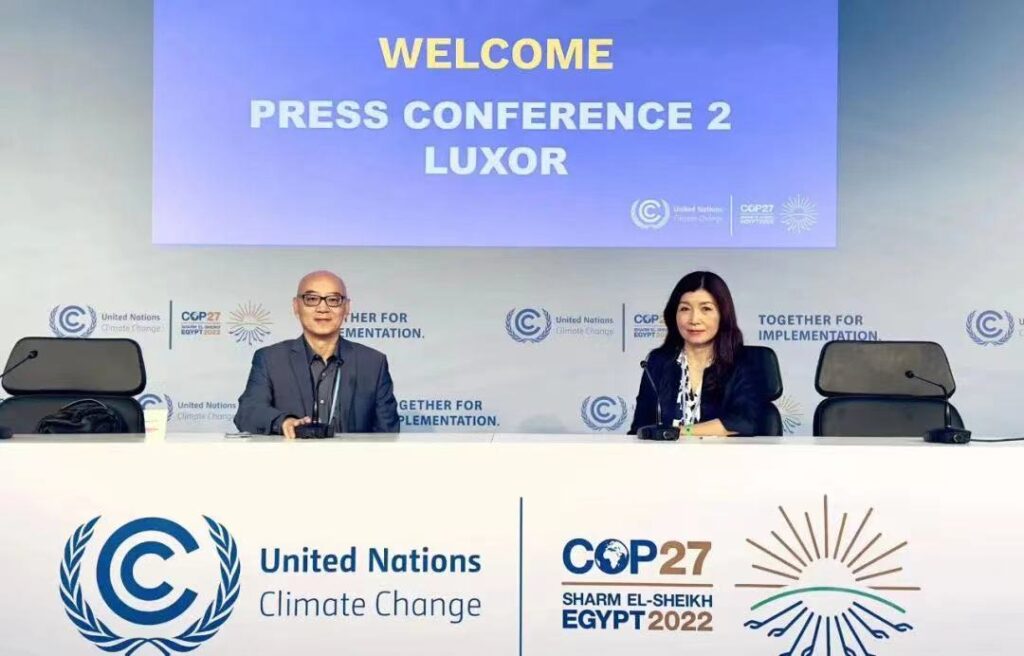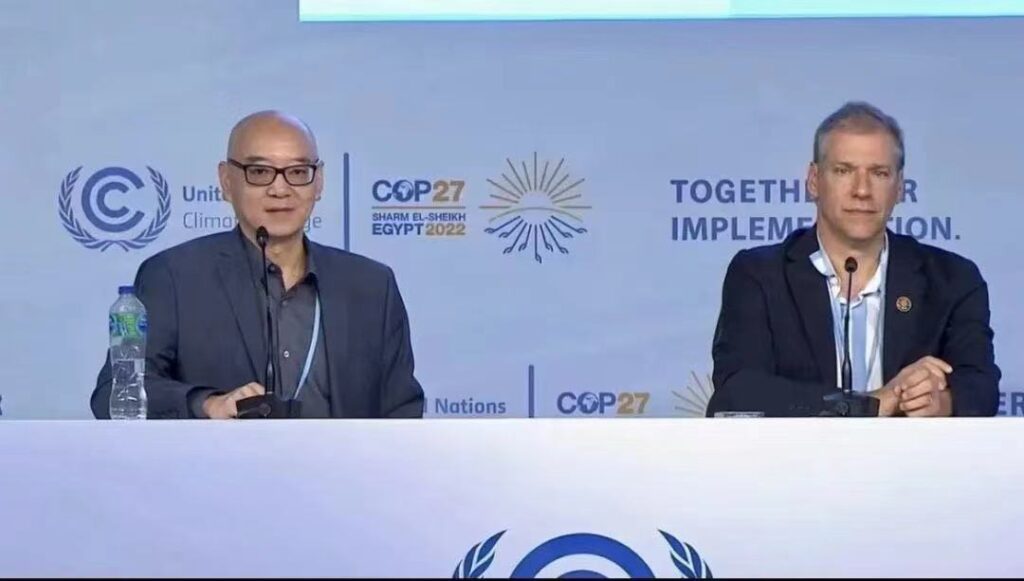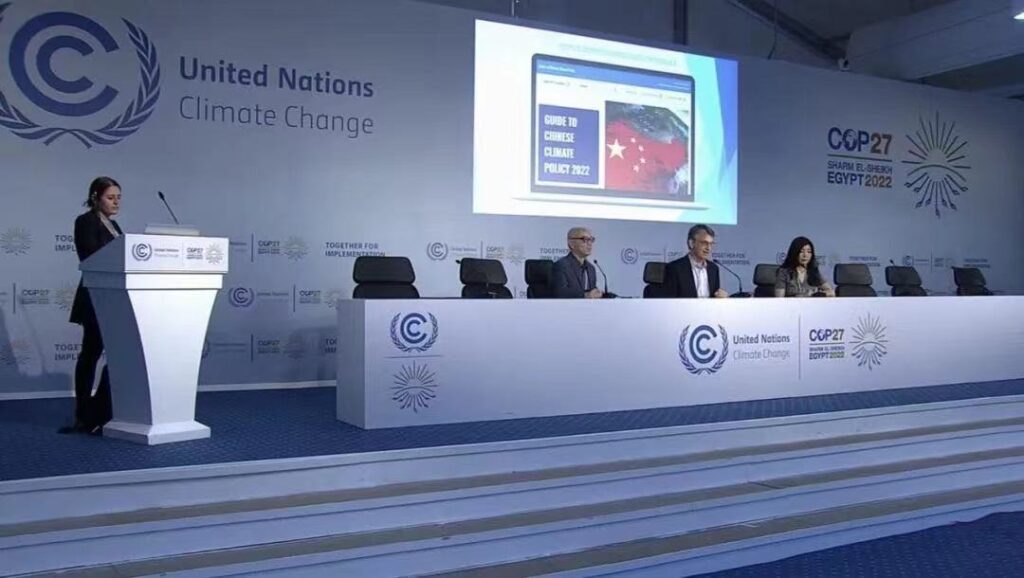The Innovation Center for Energy and Transportation (iCET) was invited as a non-governmental participant to the 27th United Nations Climate Change Conference of the Parties (COP27). As part of iCET’s ongoing mission to strengthen global collaboration in providing innovative solutions for the energy, environment, and climate crises, during the first week of COP27, iCET held three press conferences to discuss the approaches to decarbonization and the opportunities for US-China collaboration.
November 9: Sector-Based Approaches to Decarbonize China’s Key Emission Sectors

To discuss the sector-baed approach to China’s decarbonization, Dr.s Nan Zhou, senior scientist at the Lawrence Berkeley National Laboratory, and Feng An, director of iCET, on behalf of the industry sector and transportation sector, respectively, conducted an in-depth discussion on this topic.
Dr. Zhou started off the conversation by emphasizing China’s vital role in the globe to reach carbon neutrality. In discussing current trends, she focused on the industrial sector, particularly steel production, which is a major contributor to Chinese emissions and a sector of significant emissions decline. She then went on to discuss possible strategies, including technology switching, demand reduction, low-carbon fuel alternatives, and carbon capture and storage, to further bring emissions down to reach the net-zero goal in 2050.
Dr. An then transitioned to the transportation sector, which is the fastest-growing emission source. This percentage mirrors many developed economies as transportation gradually dominates all carbon emissions and, although China has been encouraging electric vehicles, it does not have a clear timetable to phase out internal combustion engine vehicles. With this, iCET conducted research on this subject and concluded that China should be more aggressive in its approach to eliminating traditional vehicles by regions, phases, and vehicle categories.
November 10: U.S.-China Collaboration on Decarbonization Solutions

In discussing a collaborated report Getting to net zero, which details opportunities for US-China collaboration in decarbonization, Dr.s Dan Kammen, Professor of Energy at the University of California, Berkeley, and Feng An, director of iCET, came together for a panel moderated by Dr. Nan Zhou, senior scientist at the Lawrence Berkeley National Laboratory. Dr. Zhou identified the milestones that are needed for the US and China to reach carbon neutrality, including an increase in the generation of renewable energy or building energy intensity. She then highlighted current progress of these efforts for both China and the US.
Dr. Kammen highlighted the high-level and bottom-up technical collaborationt hat undergirds US-China collaboration. Despite political differences, to achieve climate and sustainable development goals, it is crucial for the US and China to work together not only on the research side but also implemented by the government. On the civil society level, there are ongoing partnerships between non-governmental organizations and research teams, that can help to promote information dissemination and promote that “learning curve” in developing new energy technologies.

Dr. An focused on the collaborative project between iCET and the US Department of Commerce on decarbonization that took place throughout 2013 to 2017, halted for four years under the Trump administration, and resumed in 2021. This program focused on the prosperous Greater Bay area in China and iCET conducted several research projects on the market potential of the decarbonization in China.
November 13: U.S.-China Climate Collaboration

Continuing the previous discussions on US-China climate collaboration, Drs. David Sandalow, Professor at Columbia University and inaugural fellow at the Center on Global Energy Policy, and Feng An, director of iCET, came together for a panel moderated by Dr. Nan Zhou, senior scientist at the Lawrence Berkeley National Laboratory.
Dr. Sandalow began by introducing his book on Guide to Chinese climate policy with updated information on the prospects of US-China climate cooperation, recently updated in the 2022 edition. The book introduces the fundamentals of current emission statistics, highlighting the importance of China in the global struggle against climate change, and the complexity of decarbonization processes to reach net zero. Or, as Dr. Sandalow enthusiastically puts it, “there is no climate solution without China.”

Dr. An then emphasized current US-China collaboration opportunities in climate technology solutions. For instance, the partnership between iCET and the US Department of Commerce focused on point-to-point exports of clean energy technologies from the US to China’s Greater Bay area.












